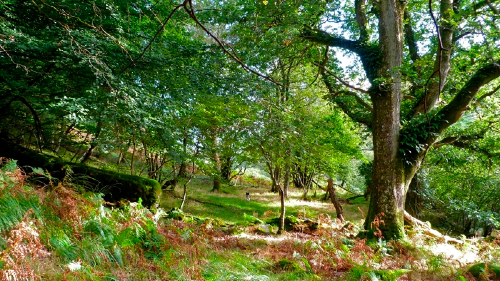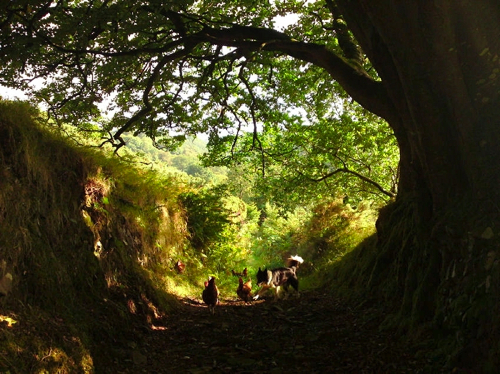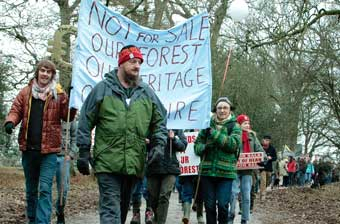There is only one day left to sign the petition demanding a fairer planning policy that is truly and equally for the benefit of communities, the environment and the economy. Please sign here: planningforpeople.org.uk
What is the draft National Planning Policy Framework (NPPF)?
It is the proposed, simplified, government policy document that sets out guidance for planners on whether or not to approve a proposed development – from your new extension to a new supermarket. The NPPF is only a draft at the moment and there is currently a consultation happening which will end on the 17th Oct 2011. The original document is well over a thousand pages long, the draft NPPF is, at the moment, around 60 pages long.
Why have ministers changed planning policy?
The original planning system was slow, expensive and overly complicated according to ministers and developers. It was a barrier to economic growth and needed to be simplified.
The Issues
Sustainable Development
The draft national planning policy document (NPPF) initially reads as an amazing step forward for sustainable development. There is even a foreword by Greg Clark MP telling us just how sustainable the draft NPPF is. Frustratingly, even after many challenges by the National Trust, CPRE and many others, no definition has been given of what is meant by ‘sustainable development’.
So, we are left with the overall ‘tone’ of the framework to advise us on this definition and that tone is overwhelmingly economic. This is important to remember as it colours the entire framework.
Presumption in favour of development
The other thing that’s important to note, is that there is a presumption in favour of development. Planners are urged not to hold up the approval of applications if it is in keeping with the tone of the framework (ie; economically sustainable development).
Local Authority Plans
One thing that could protect the green spaces in and around our communities is the Local Plan. Only around a third of Local Authorities have a Local Plan. The Government are expecting Local Authorities’s to either have or update their Local Plan asap but it will only be accepted if it fits in with the tone of the framework…
The NPPF is being sold as a means for us to have a say in how our towns and villages are developed, however there are huge question marks over the reality of a community to stand up for those areas they want to protect. The pressure Government are putting on Local Authorities to increase economic sustainability is potentially a good enough reason for a community’s wishes to be over-ruled. There is also the suggestion that a development company will have the stamina and dedicated resources to fight any number of appeals brought on them by a local community. Whereas a local community has limited resources to challenge the application of, for example, a huge corporation like Tesco.
Land Classifications and their protection
Any areas of landscape already classified as having protections in planning are as protected as they ever have been. That’s National Parks, SSSI’s, AONBs.
Greenfield (never been developed) and brownfield (been developed in the past) sites are the areas that are not protected from development. Houses, business parks, industrial warehouses and factories have to go somewhere.. so what’s the problem here? Well, it is time consuming and expensive to remediate brownfield sites for development and so the majority of developers would choose to build on greenfield sites. The changes in the NPPF make this easier by removing the guideline that says brownfield must be developed before greenfield.
Some ecologists argue that there are brownfield sites with greater biodiversity value than a lot of greenfield sites. With some taking the opportunity to attack the farming community by describing farmland (greenfield) as a chemical strewn, ecological desert.
The majority of brownfield sites are within or are surrounding our towns and cities. With some brownfield sites being left in ‘land banks’ by developers for many years, it’s not surprising they become areas of regeneration abundant with wild flora and fauna. Often enjoyed daily by local people. Pretty shocking when it’s raised to the ground and the latest supermarket appears.
It’s worth noting here that parks and playing fields are fair game for development too.
Perhaps it’s time to consider de-classifying land and assessing each plot within a planning application on it’s own merit?
Planning policy hasn’t been significantly altered in 60 years. Reform of the planning system is something that many people have been calling for, for a long time. The opportunity to create a policy that would ensure positive, truly sustainable development of our landscape has been wasted by the desire to give a quick boost to the economy in uncertain times. While this is understandable, it can not be allowed to happen. Once landscape is changed it’s nye on impossible to change it back again.
There is only one day left to sign the petition demanding a fairer planning policy that is truly and equally for the benefit of communities, the environment and the economy. Please sign here: planningforpeople.org.uk


























